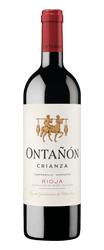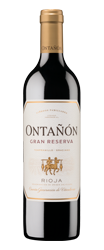Clásicos Collection
Fuimos, somos, seremos
Reserva
Contemporary Rioja
classicism
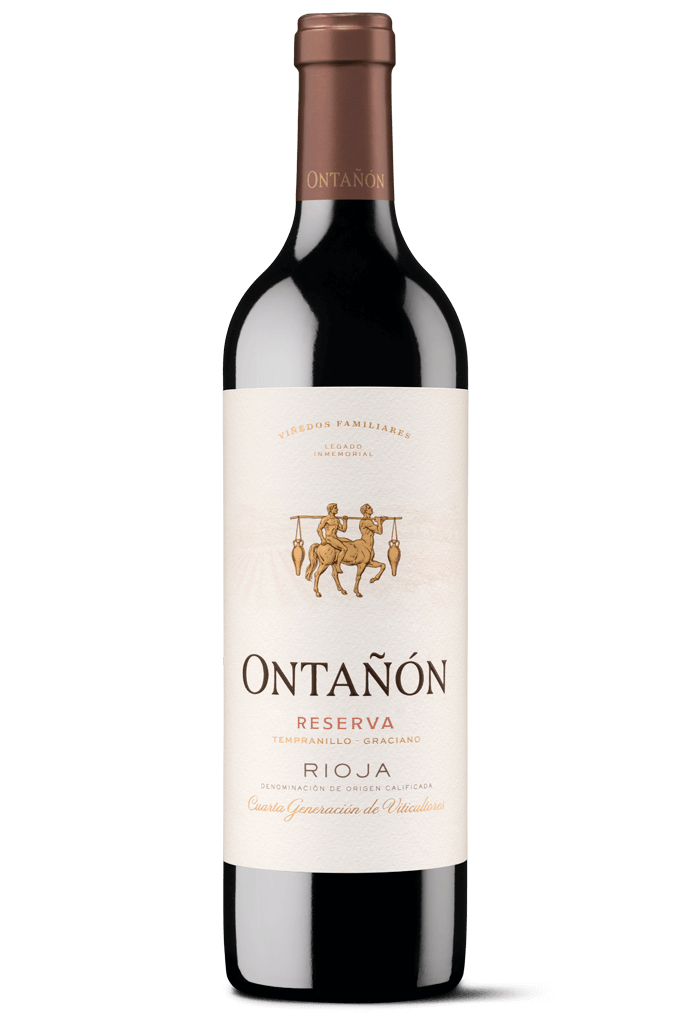
One
of a kind
One of the most particular and genuine features of the Ontañón Reserva lies in its blend of varieties, its authentic coupage between the tempranillo, with its fragrance and silkiness, and the deep acidity that the graciano grapes provide, one of the most extraordinary gems from the panoply of native varieties of our land. The perfect and precise conjunction of the two is part and parcel of the greatest history and tradition of Rioja wines and their vocation to last over time. This is why these are timeless wines. Fine Rioja wines, on the historic pathway of the greatest.
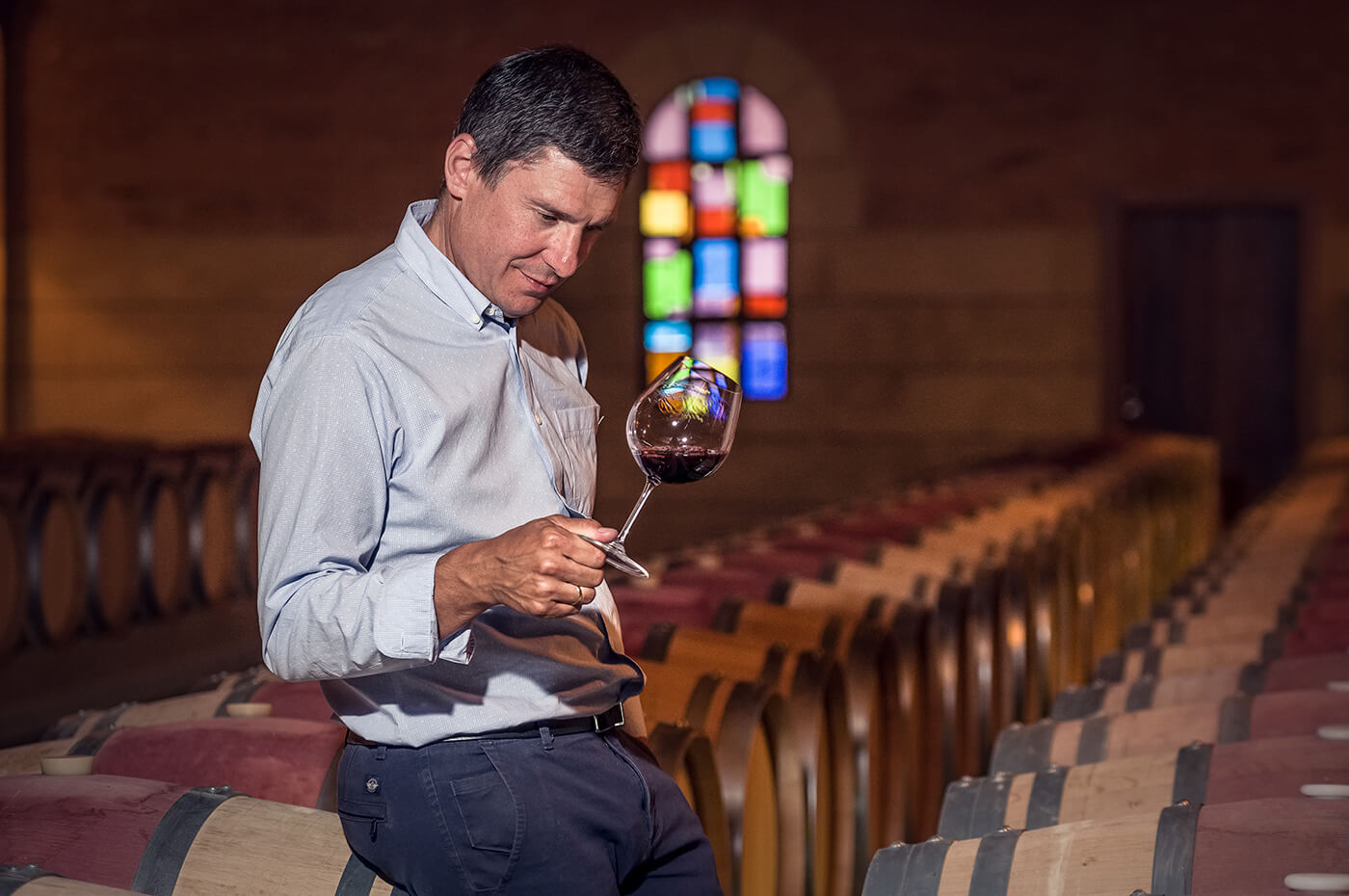
Rubén Pérez Cuevas, winemaker at Ontañón Familia.
There are many reasons to understand why the Ontañón oenologist, Rubén Pérez Cuevas, chooses to juggle and blend these two grapes, so essential in the history of the great wines of Rioja, to give shape, structure and harmony to one of the wines which best defines the vocation of our bodega: Ontañón Reserva.
Tempranillo, Rioja grape par excellence
The tempranillo grape is the Rioja variety par excellence, the basis of its great red wines and one of the most highly regarded varieties in the world due to its elegance and the multitude of aromatic and tactile sensations that it offers the palate and our memory. It currently occupies 75 per cent of the Rioja crop area and its origin has been determined as being a Riojan cross between the white albillo mayor grape (turruntés), originally from Castilla-León and described by Alonso de Herrera in 1513, and the black benedicto variety from Aragón, described by Nicolás García de los Salmones in 1914, and which is now in the process of extinction. Tempranillo is the great Spanish red-wine grape variety and traditionally has found in Rioja the territory where it can offer its maximum expression of finesse and elegance.
“The tempranillo gives us acidity, absolutely vital for ageing, as well as the characteristic silkiness of its fine, polished tannins and the subtlety of a variety which defines the historic elegance and finesse of the immortal Rioja wines. Moreover, the altitude of our vineyards in the Rioja Oriental means that its qualities are multiplied exponentially”, explains Leticia Pérez Cuevas, head of Viticulture at Ontañón.
Ontañón Familia High Altitude Vineyards in the Sierra de Yerga.
The Ontañón Familia tempranillo in the Sierra de Yerga
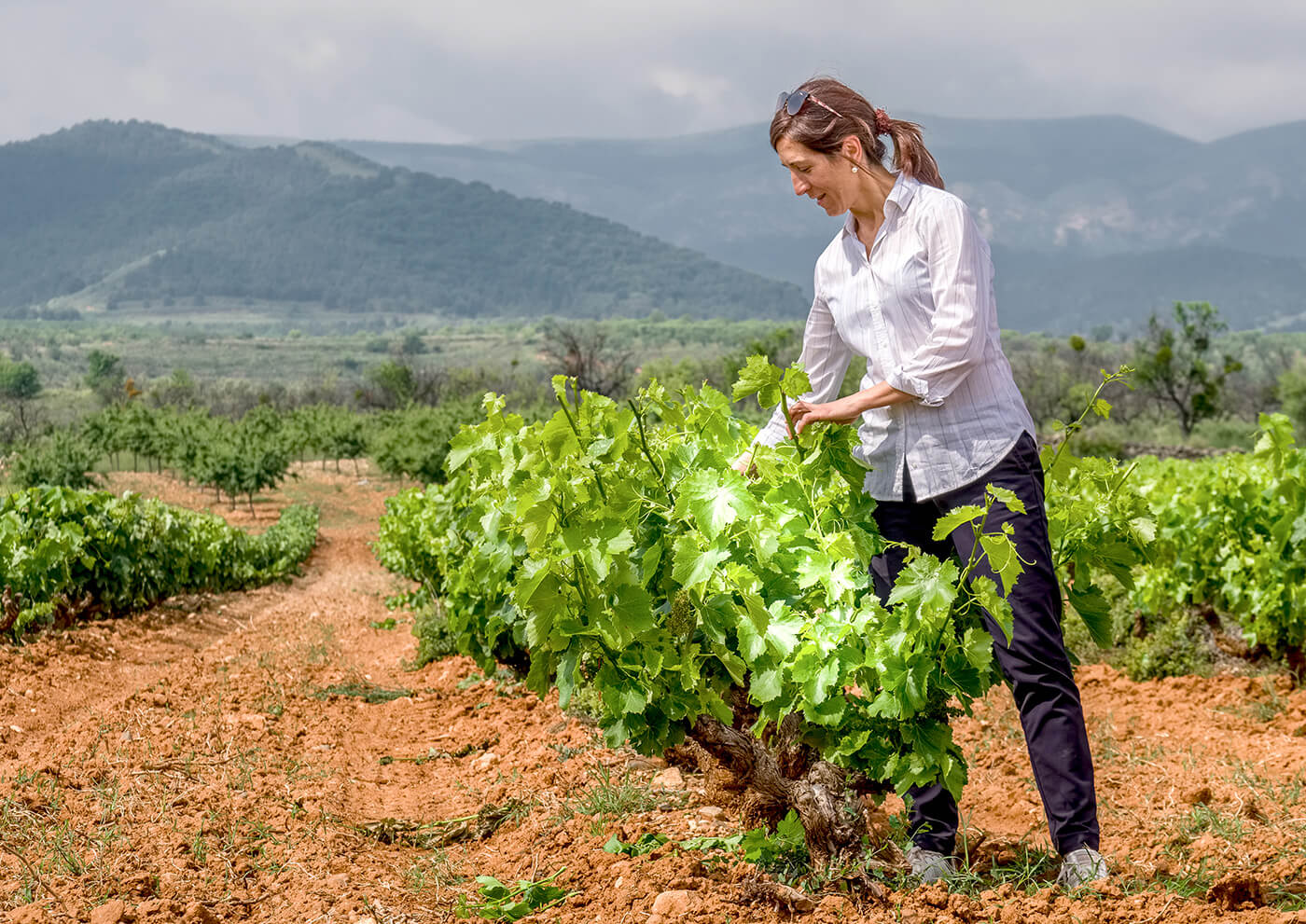
Leticia Pérez Cuevas, responsible for Viticulture of Ontañón.
As an early ripening vine, the tempranillo variety is completely at home in zones with a continental climate and annual rainfall of around 400 litres, with a wide range of temperatures. That is, with night time temperatures in August of no more than 16 degrees and not more than 33 degrees during the day, but still with good exposure to the sun. That is, very similar to the climate conditions in high zones as in the case of Quel, in Rioja Oriental, where virtually all the Ontañón Familia vines are located.
In Quel, summers are short, hot, dry and largely cloudless and the winters are cold and partially cloudy. During the course of the year, the temperature generally varies between 2 °C and 30 °C and rarely falls below -3 °C or rises above 35 °C. The wettest period in Quel is between 2 October and 14 June, with over 17% likelihood of rain. The wettest month in Quel is May, with an average of 7.4 days with at least a millimetre of rain.
The average age of these upland Ontañón Familia tempranillo vineyards is between 35 and 40 years, as they were planted at the beginning of the 90s in a zone with poor soils and a sandy-loam texture (16.9% loam, 73.1% sand, 10% clay), and with a huge range of orientations, terraces and training systems.
Tempranillo has an impressive aromatic capacity, it is round and full-bodied in the mouth but without overpowering; it is persistent and has an incredible virtue of being able to multiply its olfactory sensations in the glass and bring out more aromas, more nuances, more beauty.
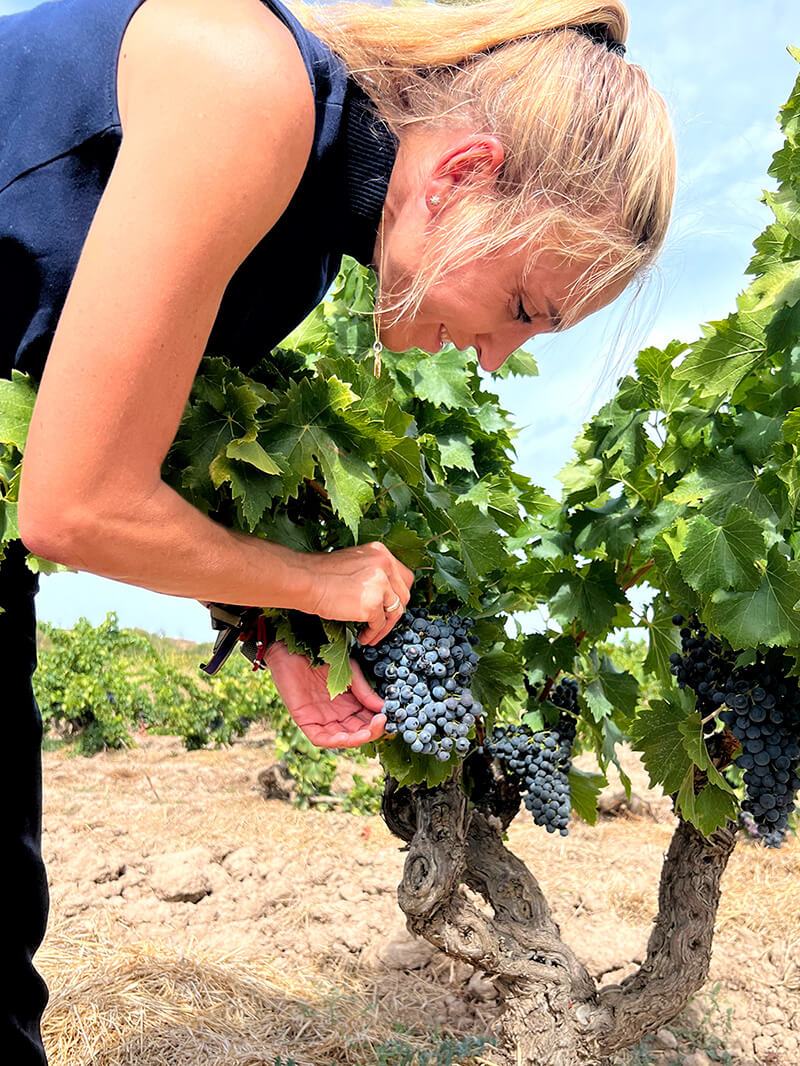
Raquel Pérez Cuevas, in the old vineyard of Ontañón.
Graciano, the perfume of Rioja
Graciano is a minority variety with its origins in Rioja and with very little presence in other regions. Historically, it has formed part of the blends of the Rioja Gran Reservas alongside the tempranillo, garnacha and mazuelo. It is a grape with a very low yield, late budding and very long ripening. It has an exuberant aroma and its musts are wine-red in colour, pleasant and high in acidity, highly perfumed and evolving towards the smells of cut wood. Juan Marcilla Arrázola (author of the legendary ‘Tratado práctico de viticultura y enología españolas de 1.942’) considers that the characteristic Rioja perfume is due to the presence of this variety which contributes finesse and quality to the coupage, lifting the aromatic potential of the tempranillo grape.
The Ontañón Familia winemaker, Rubén Pérez Cuevas, explains that graciano is a variety which has been considered historically as important in Rioja because of its acidity and the capacity to round the blends of the gran reservas. “I have worked with it a lot, I have enjoyed it in the field because it is demanding, due to its complex ripeness. In addition, in our high altitude vineyards in the Quel district, it expresses itself with an amazing, delicate elegance and finesse”.
Reserva and Oak * There's the Magic * Reserva and Oak * There's the Magic * Reserva and Oak * There's the Magic *
24 months in French- and
American-oak casks
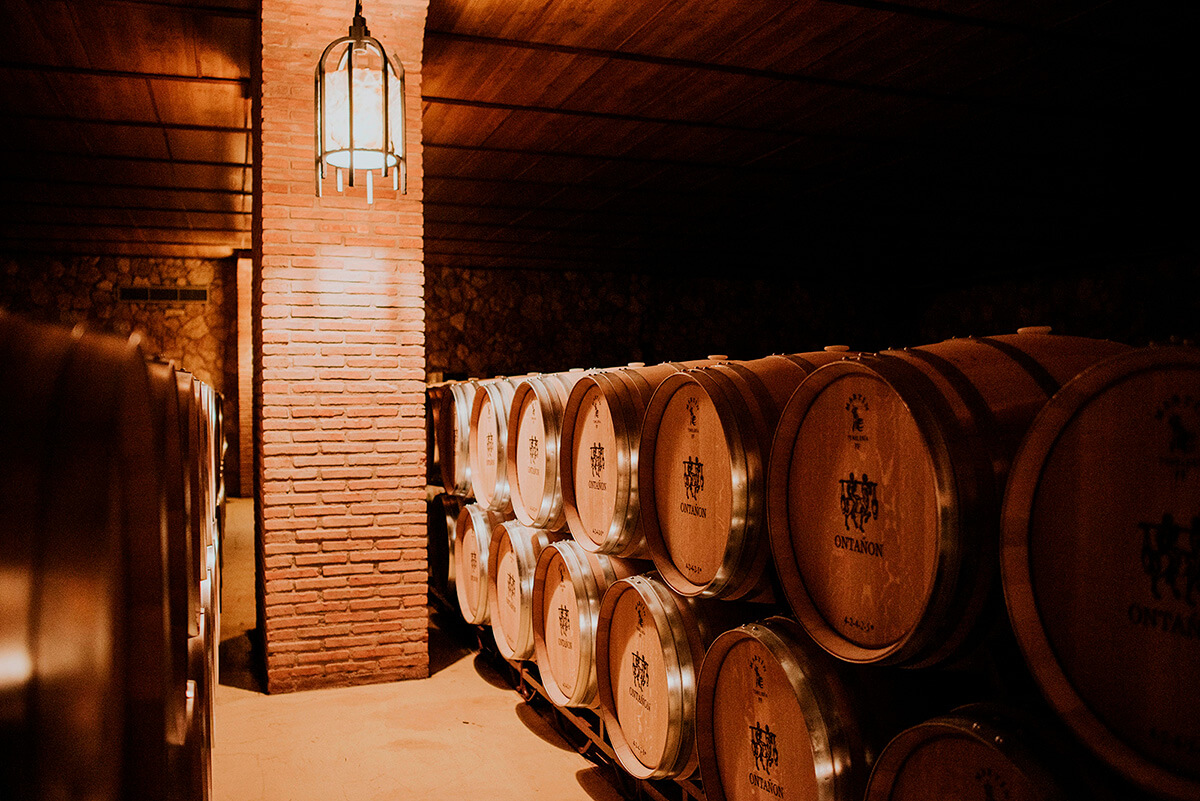
Barrel warehouse of the Temple of Wine, by Ontañón Familia
Time and the myth.
Storing and ageing wines in oak casks is one of the vital processes that multiply the taste, texture and aroma of great wines. The source of the oak, the age of the wood, the type of toasting and the time of ageing and storing define the intensity and range of flavours that the oak gives to the wines. The oak wood from which the casks are constructed, as the journalist Luis Vida explains, provides a precisely measured amount of oxygen. The wine inside the cask only receives the air which filters through the fine pores in the oak. This oxygen causes subtle changes, a slow oxidation process that is just enough and which turns the colour from the purple hues towards garnet and brick red. The contribution of the oak to the wine’s aroma is also crucial and the appearance of tertiary aromas defines the essence of aged wines, of the Rioja Reservas that, as in the example of our Ontañón, offer a wonderful array of tertiary aromas.
Oak,
a world without end
The oxidation of the wine in American oak is more gradual than in French oak. There are two reasons for this. Firstly, the smaller size of the pore and also the thickness of the American-oak staves of the cask (29 millimetres) is greater than in the case of French oak (21 millimetres). By playing with these two characteristics, we can manage to get the oxidation to progress much more slowly and this allows us to age the wine for longer periods.
American oak.
There are different groups of American oak species in the world, although the one we use the most is the ‘Quercus Alba’. It is found mainly in the states of Ohio, Missouri, Virginia, Wisconsin, Illinois and Iowa. It is a very dense oak with a fine grain. It is the one which contains the least tannin (35 gr/kg), but it is very rich in aldehydes (which is where the vanilla aroma comes from) and lactones (coconut aroma). However, it has very little eugenol (clove aroma), so it produces an aroma which is more ‘boisé’ (woody aroma) than oak of French origin, but with a lower tannin content.
French oak.
The French oak used for ageing wines is the one called Quercus sessilis or Quercus petraea. It is most abundant in the forests of Allier, Nevers and Tronçais. It prefers poor, sandy soils and produces taller trees with a trunk with a smaller diameter and a finer grain. It has less tannin content (45 gr/kg) and is ideal for ageing wines. Its aromatic notes are spicier (it is a wood rich in eugenol, which has a smell of cloves), dry and serious. There is also less evaporation than in the case of Limousin oak.
Toasts.
Maximum subtlety
The beauty of our Ontañón Reserva is also founded on being able to balance the length of ageing and playing with the grade of toast of the casks.
Medium toasts.
We use medium toasts, in which we char five millimetres of thickness of the oak. This toast gives us complexity and aromatic potency while at the same time increasing tannicity.
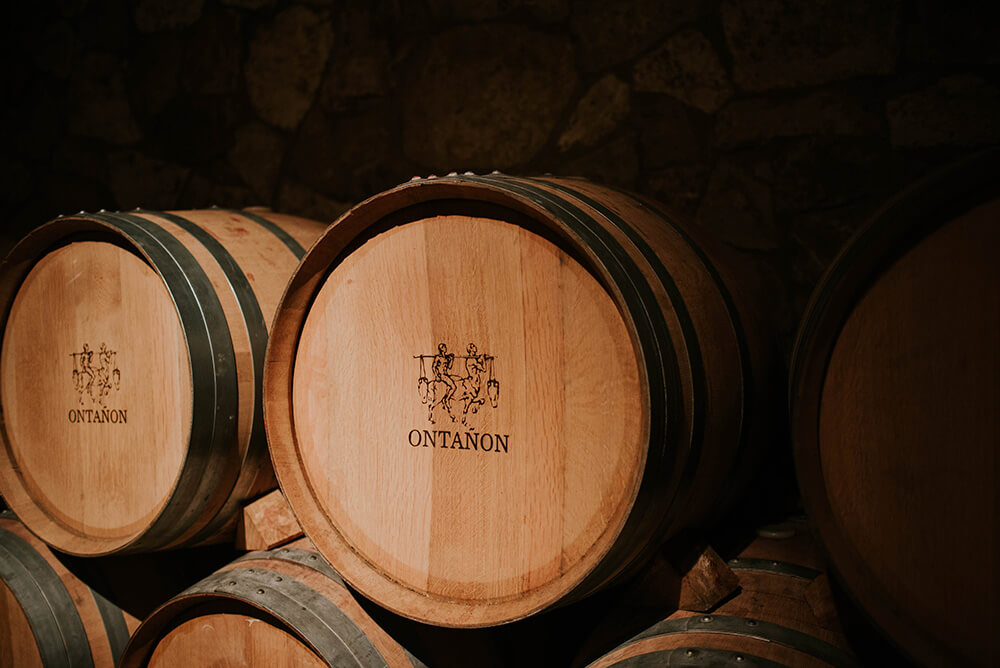
Ontañón Familia barrels.
Aromas of the
medium toasts
In American oak
The aromas which famously appear in American oak are vanilla, caramel, nuts, chocolate, toast, honey and the coconut is even more intensified.
In French oak
we see an increase in lactic notes, reminders of cigar boxes, cedar and tobacco, among many more which multiply in the glass and which recall wild strawberries, red berries and damson jam.
Racking, the cellar master’s art
The transformation of the wine in the cask is vital. In the classic “Bordeaux method” for great aged wines, we rack the wine every three or four months: the wines is removed manually and pumped into a tank. The casks are washed, sterilised with sulphur and once they have been rinsed out with water they are refilled with wine to continue the evolution. One of the most important features of racking is decanting. The sediment which forms at the bottom of the cask contains dead yeast, bacteria, organic substances or fining agents which have to be separated from the wine. In addition, racking helps us to obtain a wine with a homogeneous flavour.
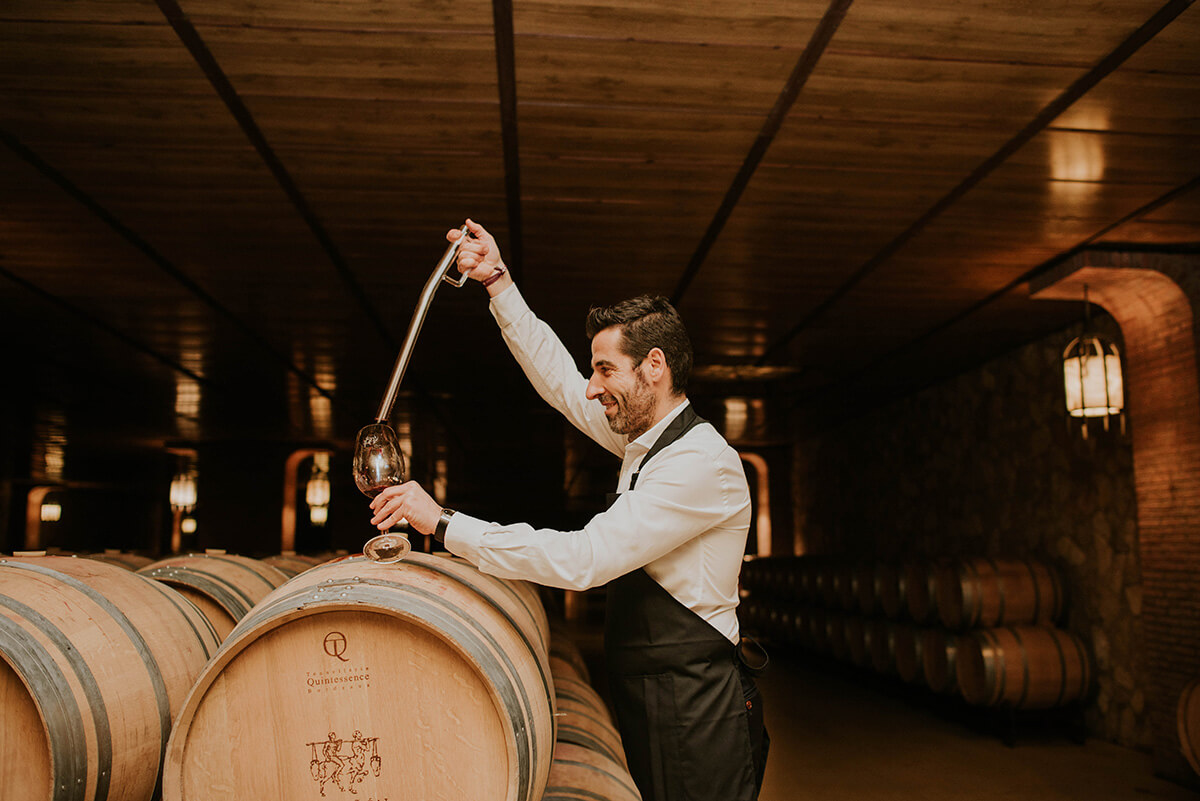
Racking in the barrel room.
Last Stage * bottle Ageing * Last Stage * bottle Ageing *
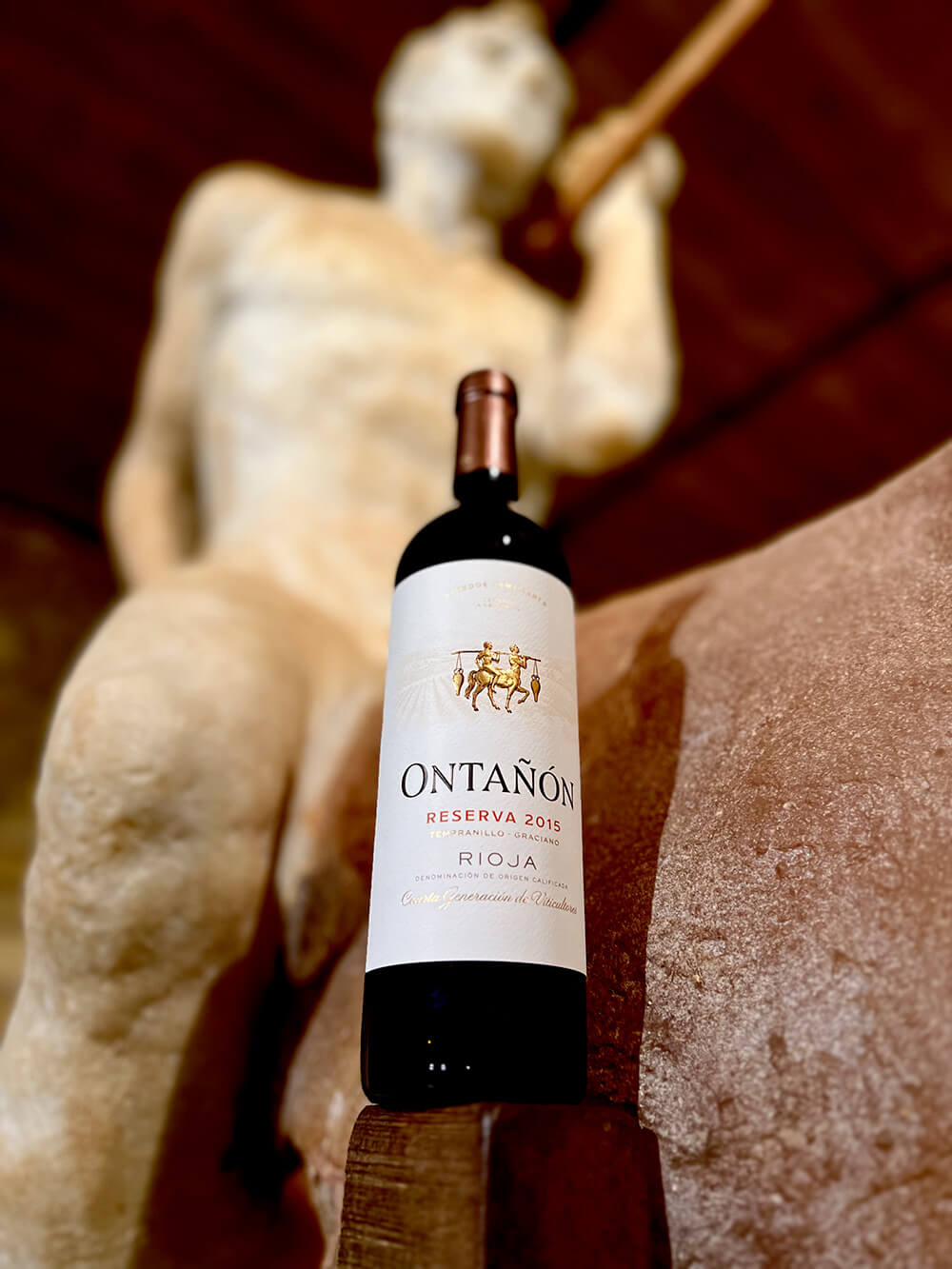
The Ontañón reserve in the Centauro winery.
Over twelve months in the “Temple of Wine” bottle cellar
The main difference between the ageing of the wine in the cask and in the bottle is the crucial role played by oxygen. When it is ageing in the wooden cask, the wine is receiving tiny but continuous doses of oxygen through the pores in the oak. However, during bottle ageing the wine is virtually free of any oxygen, except the tiny quantity produced by the chamber of air in the bottle before it is sealed and corked and the microscopic micro-oxygenation through the pores in the case of natural cork stoppers. Because micro-oxygenation is fundamental in the wine’s ageing process, in these small quantities, the oxygen stabilizes and increases the intensity of the colour, harmonises the sensations in the mouth and improves the wine’s aromatic complexity.
The vineyards, the origin, the land,
the landscape of wonderland
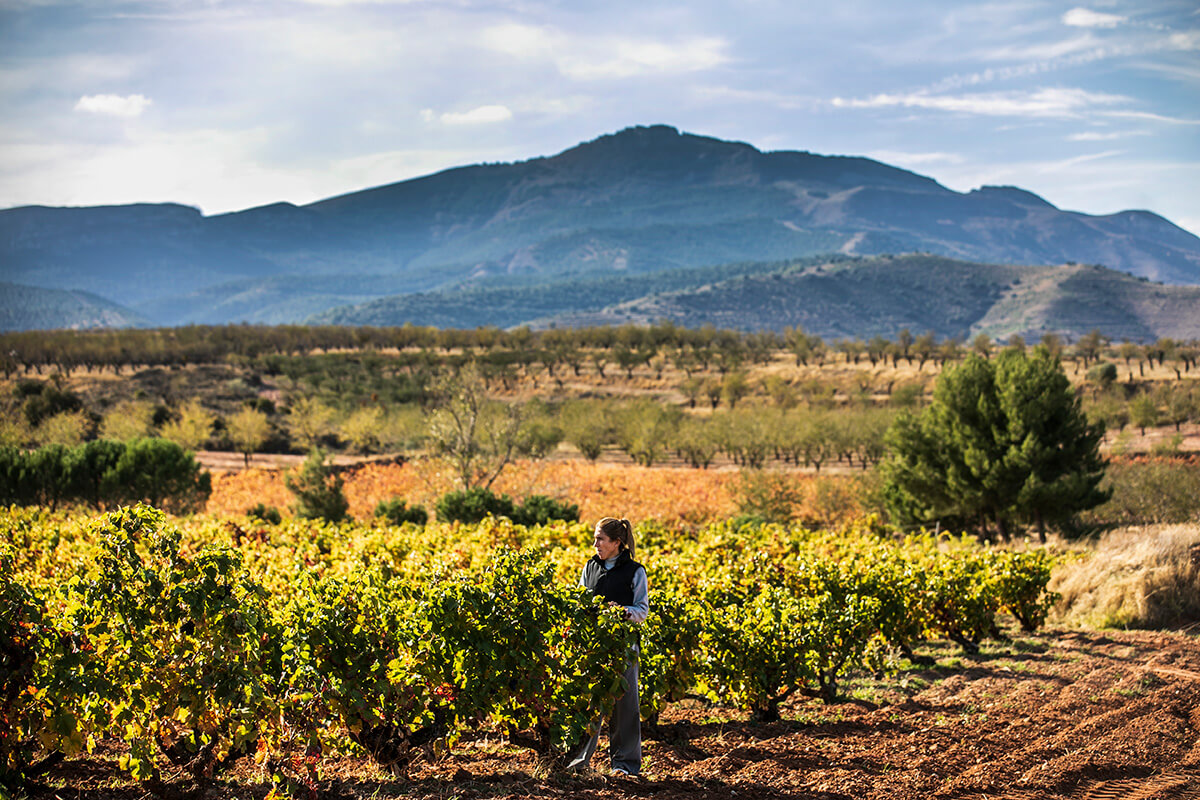
Ontañón Vineyards in Quel, with its incredible biodiversity.
95% tempranillo and a dash of graciano.
Ontañón Reserva consists of a coupage of 95% tempranillo and a dash of graciano. In its composition, two of our bodega’s most beloved vineyards are involved: La Pasada, planted over three decades ago in the Sierra de Yerga at a height of 800 m; and La Nave, a plot located in the Siete Caminos district, at the foot of Monte Yerga. A vineyard planted in 2004 at an altitude of 450 metres. Vines situated in very cool areas and as they are at the very edge of the limits of cultivation, ripening of the berries is ideally gradual and slow; and the harvest – by hand – is one of the latest in Rioja.
The clusters undergo a double selection process. In the vineyard itself and on reception at the winery. We only select the grapes which come from the highest zones, since they ripen very slowly and the balance between acidity and structure is absolutely perfect.
Harvest staggered
The harvest is staggered and conducted by variety. We start with the tempranillo and when the ripeness of the graciano grapes reaches its ideal point, we begin picking these grapes too. The grapes are picked by hand and placed in crates for transfer to the winery facilities under refrigerated conditions so as to preserve their integrity to the maximum. The selection is made at three levels: in the vineyard, upon reception at the winery and on a sorting table before going into the vats.
2015 Harvest
The good climate conditions, which throughout the growing season favoured an excellent vegetative and sanitary condition of the vines, with no pests or diseases of note, also made it possible to reach a good balance of ripeness in all the vines, something in which an exceptionally fine month of September decisively helped ensure the excellent quality. One of the noteworthy aspects of the 2015 harvest was that is occurred almost simultaneously in the whole territory of the appellation, with the main part concentrated into four weeks, whereas traditionally the harvest in Rioja spreads out over almost two months.
Traditionally, the Feast Day of the Virgen del Pilar on the 12 October marks the zenith of the harvest, but this year, almost the whole of the harvest had already been collected by this date, which overall offered grapes of great quality, characterised by perfect health and very suitable analytical parameters for producing excellent wines. Of special note was the high quality of the wines from vineyards located in cooler districts and with moderate vigour and yield.
At the end of ripening we enjoyed some days with a huge thermal break, with the mornings bathed by the sun and very cool nights. Our vines, located at the edge of one of the highest zones of the DOCa Rioja offered exceptional quality, with healthy grapes and a perfect balance between alcoholic and phenolic ripeness.
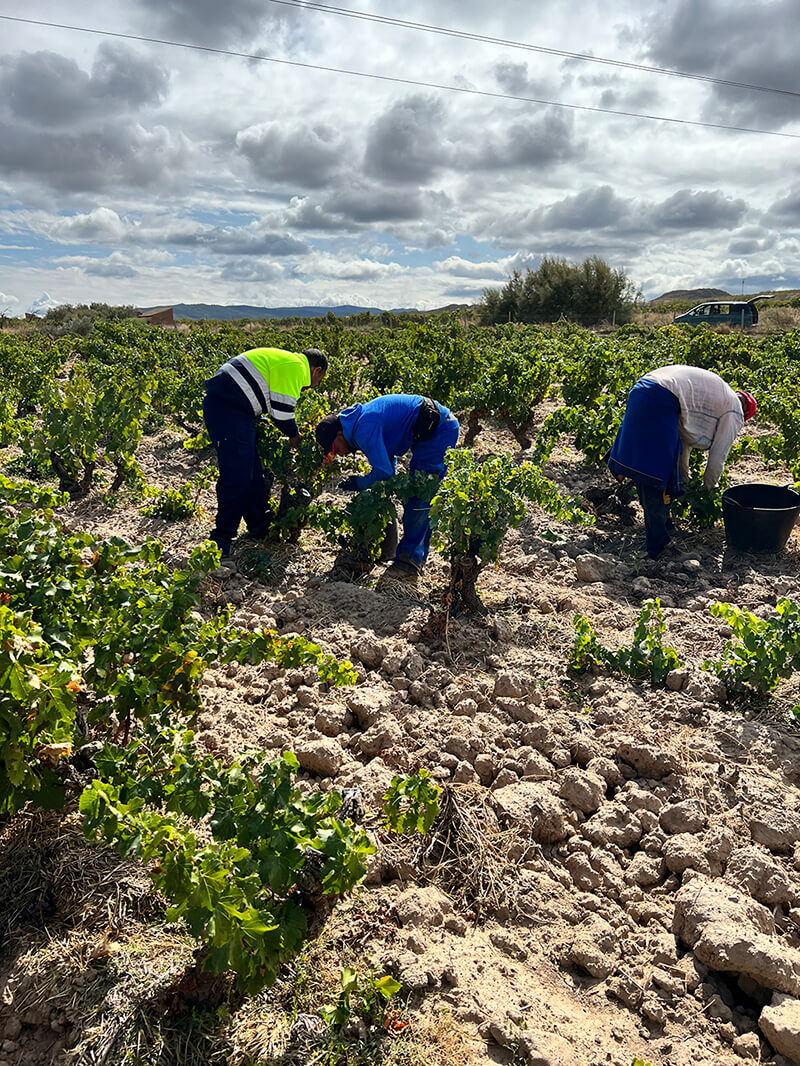
Manual harvest in Quel.
THE VINIFICATION
The harvest was one of the latest in the appellation due to the high altitude of our vineyards. It was conducted by hand with the grapes placed in crates, selecting the clusters on the vine and the berries on reception of the grapes in the winery.
VINIFICATION.
Long maceration (over 21 days) with a controlled temperature of between 26 and 28ºC.
AGEING.
24 months in American- and French-oak casks, 24 months in the bottle.
Tasting
It shows great depth of colour with a brilliant, nuanced ruby red hue with a slightly irridescent charácter on the edges that indicates a long ageing potential.
The wine displays an explosive nose with mixed berry fruit, as well as dried apricots with minerality and a slightly truffled nose that is indicative of the terroir in which the grapes grow. It shows a touch of a balsamic note, which comes from the small percentage of Graciano that makes up the blend. Additionally, notes of tobacco, cloves, a touch of smoked pepper, vanilla and cocoa powder come from the light toast of the French oak used for ageing.
A generous wine with great balance and an unctuous texture that begs us to continue tasting again and again. The tannins are fleshy, subtle and yet still extremely presesnt and well integrated. The wine shows incredible complexity and elegance exposing notes of ripe fruit and a touch of integrated oak of the highest quality. Decanting reccommended.
14 % Alcohol by Vol.
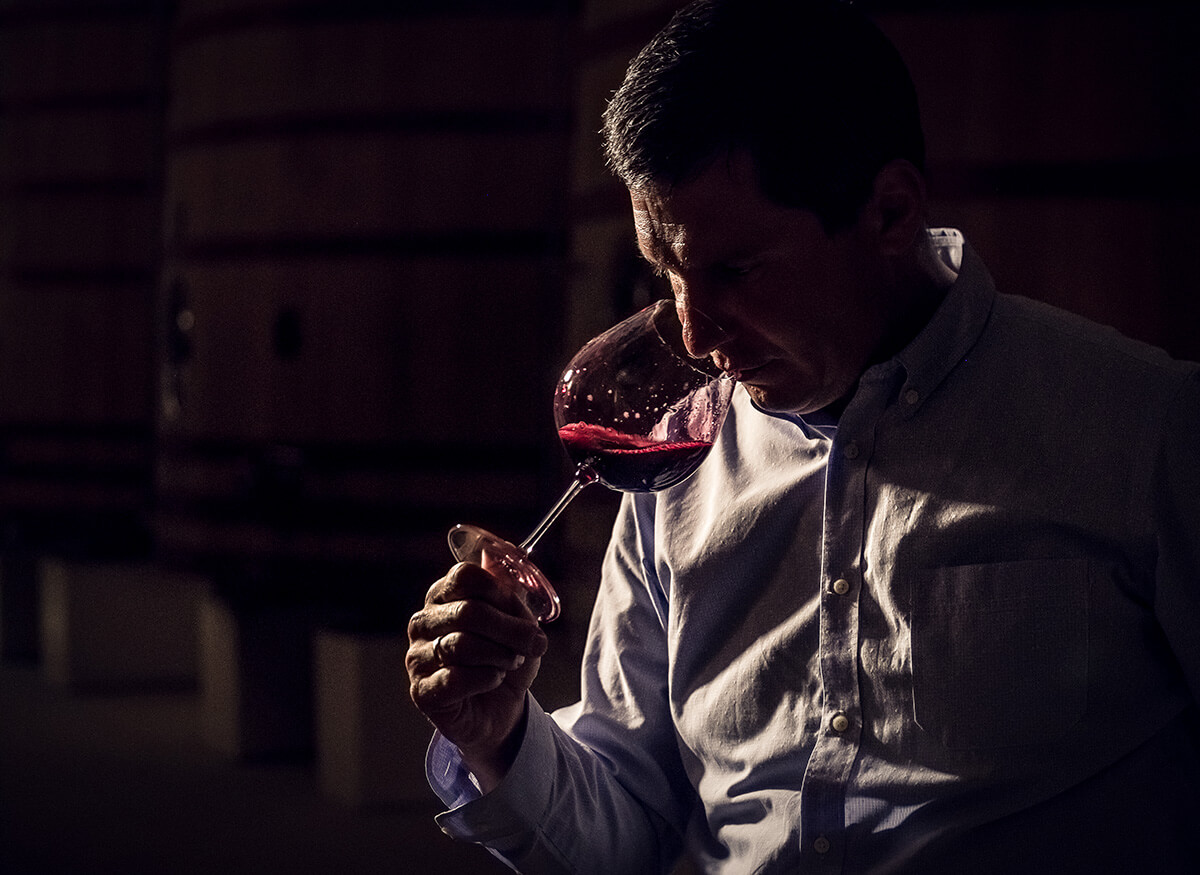
Rubén Pérez Cuevas, at a moment during the tasting in the winery.
Download
Tasting Notes 2015
· PDF ·
Bottle Image
· JPG ·
Label
· PDF ·


